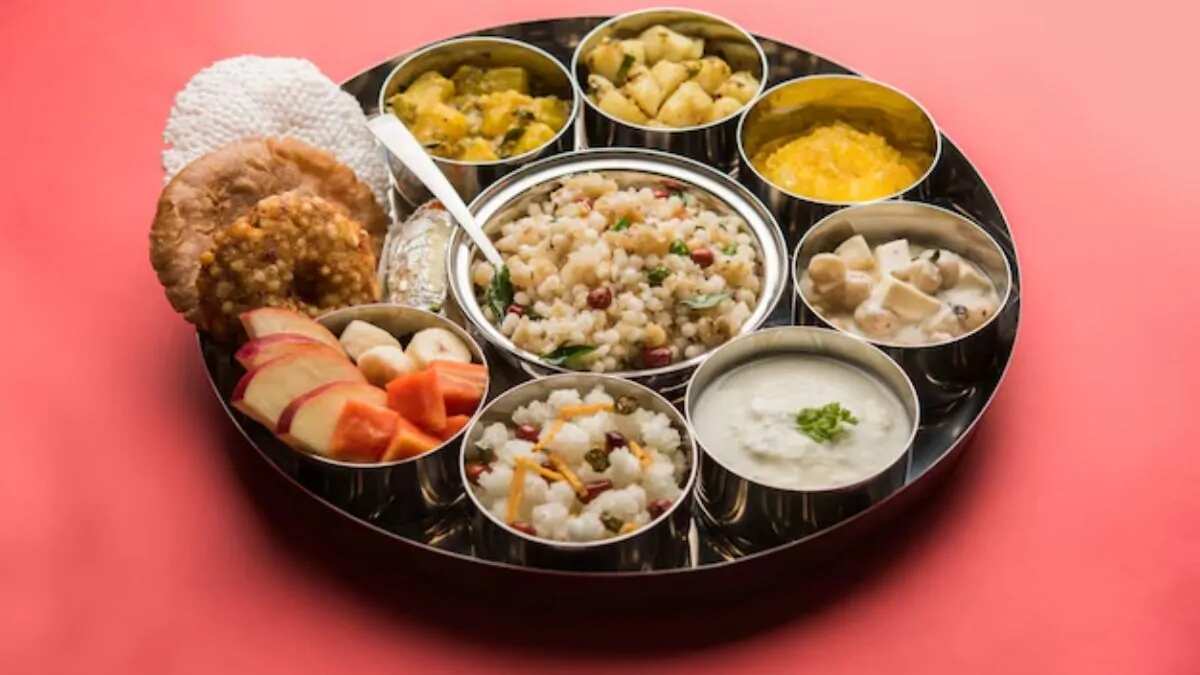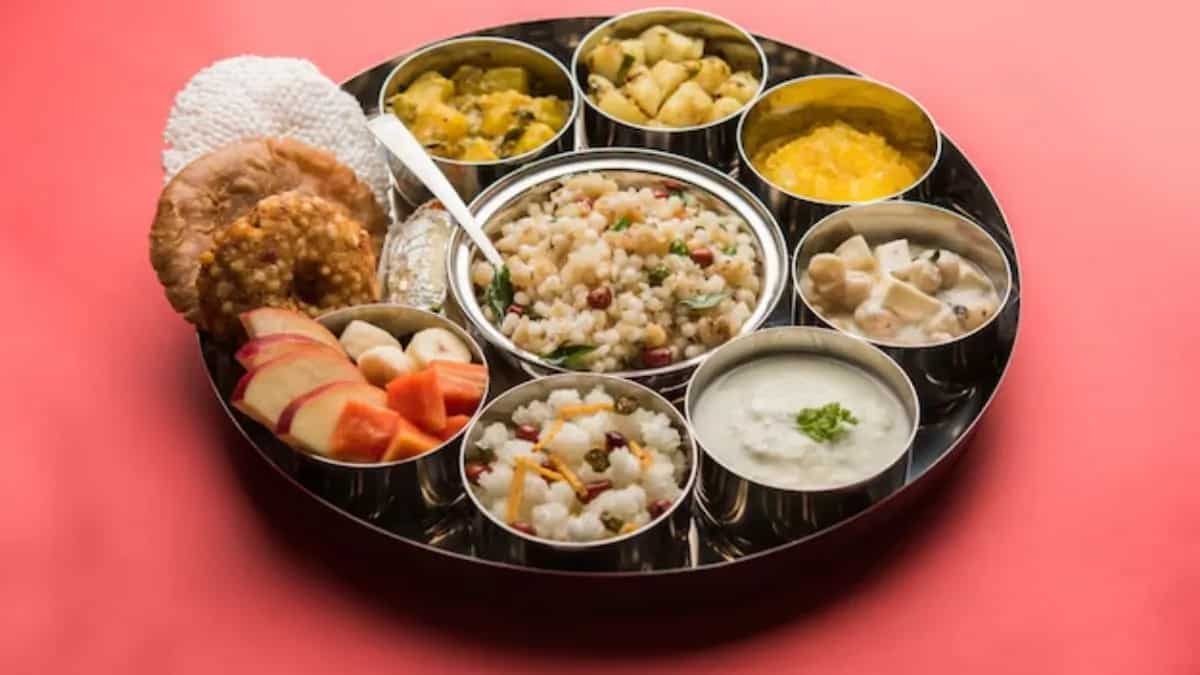Tarishi Shrivastava Has been updated: April 9, 2024
Chaitra Navratri marks the beginning of a new year in the Hindu calendar. During her nine auspicious days, devotees observe fast and worship Goddess Durga in different forms. Fasting is an essential part of Navratri, but that doesn’t mean you have to abstain from delicious food. In fact, this is the time when family and friends gather together to prepare a variety of lip-smacking vegetarian dishes. Read along to learn some great 9-day fasting recipes.

Navratri is one of the most auspicious and widely celebrated Hindu festivals in India and is celebrated over 9 nights and 10 days. For devotees, these nine days of Her represent a period of intense devotion, prayer, and ritual worship devoted to the various forms of the supreme Goddess Durga.
During Navratri, the atmosphere is filled with religious fervor and joy. This goddess is worshiped under various names and forms such as Shailaputri, Brahmacharini, Chandraghanta, Kushmanda, Skanda Mata, Katyayani, Kalaratri, Mahagauri, Siddhidatri, etc. Grand pandals and temples are decorated with lights and elaborate flower arrangements to welcome the goddess.
For nine nights, faith and spirituality take center stage as people unite in worship of Shakti, the primordial cosmic energy manifested by the Goddess.
Sabudana vada is a popular Indian snack made with tapioca, potatoes, peanuts, and Indian spices. To make sabudana vada, soak sabudana or tapioca pearls overnight until soft and swollen. Drain excess water. Mash boiled potatoes and roasted peanuts together, add spices like cumin, green chili, curry leaves, ginger, salt and mix with sabudana. Shape into patties or balls and fry in hot oil until golden brown and crispy on the outside.
Albi sabzi is a delicious vegetarian dish made from the roots of Albi (Colocasia), which is commonly grown in India. To make albi sabzi, peel the albi root, cut into cubes and boil until partially cooked. Next, make a paste of onions, garlic, ginger, tomatoes, turmeric, red chilies, coriander powder, cumin powder, salt and other spices and fry in oil or ghee. Add some water and cook further until the albi becomes soft and the gravy thickens.
Aloo ki sabzi or potato curry is a simple but delicious Indian vegetarian dish. To make this Satvik Aloo Tamatar Ki Sabzi, start by dicing the potatoes and tomatoes. Heat oil in a frying pan and add cumin seeds. Once it boils, add the potatoes and stir. Cook for 2 minutes then add turmeric, salt, chili powder and garam masala. Mix well. Next, add the chopped tomatoes and mix. Cover and simmer until tomatoes are tender and potatoes are tender. Add water as needed to prevent sticking. Finally sprinkle with coriander and serve this easy aloo ki sabzi with rice or roti.
Kadu ki sabzi is a popular Indian dish made with tender squash or squash. To prepare this dish, peel the pumpkin and cut it into cubes. The squash is then sautéed in oil with flavorings such as onions, garlic, ginger, and tomatoes, and spices such as turmeric, coriander, cumin, chili powder, and garam masala. Once the pumpkin is lightly browned, add water or stock and simmer until tender. Some variations add cream or coconut milk at the end to give it a richer flavor. The final sabzi has a sweet, earthy flavor and a soft texture from the cooked pumpkin.
Albi, also known as colocasia or taro root, is the star ingredient in the delicious Indian curry dish albhi masala. To make this hearty curry, peel and cut the albi into cubes and boil until tender. Fry the parboiled albi until golden brown. The aromatic masala is made by sauteing onions, tomatoes, garlic, ginger, and spices such as coriander, cumin, garam masala, red chili powder, and turmeric.
Vrat ki kadhi, also known as rajgira kadhi or farali kadhi, is a fasting-friendly version of the popular north Indian yogurt-based curry. This kadhi is water-based instead of yogurt, as dairy products are restricted during the Hindu fasting period. The main ingredients are rajira (amaranth) flour, senda namak (rock salt), oil or ghee, and a blend of ground spices such as cumin, coriander, ginger, and green chili. To prepare, whisk Rajira flour in hot water. To avoid lumps. Add the tempering spices to the hot oil or ghee and pour over the rajgira mixture. Simmer until thickened.
Singhare ki puri is a popular sweet dish originating from the Indian state of Maharashtra. It is made using Sinhala or water chestnut flour, which adds a unique texture and flavor to the dish. To make Singhare ki puri, mix Singhare flour into the dough using ghee and milk. The dough is then rolled out into small puri or flatbread shapes and fried until crispy and golden brown. Once cooked, the puri is soaked in sugar syrup flavored with cardamom and saffron.
Kuttu ka paratha is a popular flatbread dish made during the Hindu festival of Navratri, when grains such as wheat and rice are avoided. It is made using kuttu ka atta, or buckwheat flour, which is allowed during fasting. To make kutu ka paratha, knead kutu ka atta into a soft dough using water or yogurt. Divide the dough into small balls and roll them out into thin circles. These are cooked in a hot tawa with ghee or oil until crispy on both sides. Kuttu ka paratha can be stuffed with potato-based filling or eaten as is.
Rajgira Roti, also known as Amaranth Paratha, is a popular flatbread enjoyed during Navratri. These gluten-free rotis made with rajgira or amaranth flour are an important part of the vrat ka khana (fasting food) eaten during the festival. To make rajgira roti, mix amaranth flour, water and a pinch of senda namak or rock salt to form a soft dough. Roll into a ball, flatten into a disc and fry on a hot tawa or grill until lightly browned on both sides.

